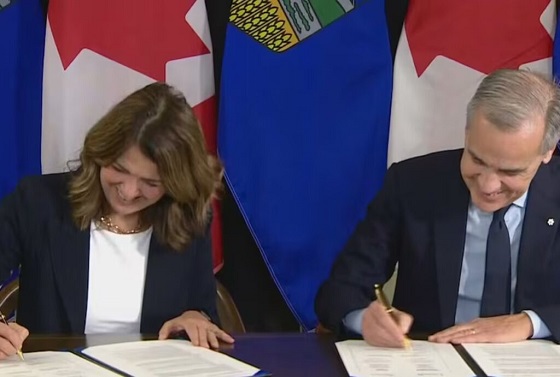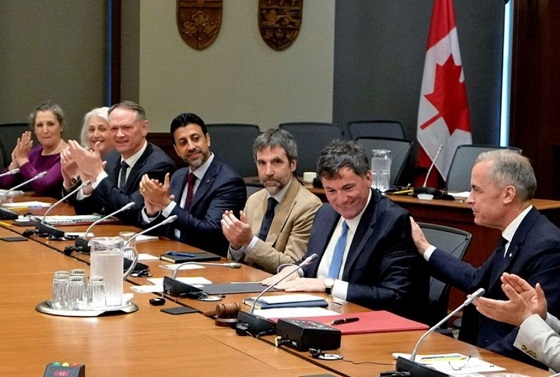Alberta
Insurance rate increases absolutely unacceptable: NDP Critic for Service Alberta

This post was submitted by Jon Carson, NDP MLA for Edmonton-West Henday, Opposition Critic for Service Alberta
Thirty per cent.
That’s how much auto insurance rates skyrocketed by for some Albertans at the end of this year, after Premier Jason Kenney and the UCP removed the five per cent cap on rate increases that our NDP government brought in, taking a “no limit” approach to how much insurance companies could actually raise rates.
The jump was immediate.
Albertans saw a wave of premium increases bordering on price gouging. Over 90% of car insurance companies filed for rate increases as soon as the cap was lifted, and rushed to bill drivers as soon as they could. Of the companies that received approved rate changes, the increases ranged from 4.9 per cent to an eye-popping 29.8 per cent.
It was a nice gift from Jason Kenney, who already slammed families for hundreds of dollars of new costs in his fall budget, including hikes to income tax, property tax, as well as more in school fees, prescription drugs and college tuition.
As usual, Finance Minister Travis Toews trotted out the UCP’s one-trick pony and blamed the NDP, claiming that insurance companies were set to pack their bags and flee the province if he didn’t let them jack up premiums beyond five per cent.
The lobbying effort came out in full force. The brokers, the insurance companies, and the Insurance Bureau of Canada are working overtime to sell quite the sob story: a massive spike in claims costs, not enough options for drivers, etc, etc. It’s tough times for the poor, little ol’ car insurance company.
What a load. These are some of the biggest and most profitable companies in Canada, and they simply want back the power they had to jack up premiums hand over fist.
The truth is that claims costs over the past few years are level, a fact that’s supported by the Insurance Bureau of Canada‘s own data. In fact, an actuarial analysis by Fair Alberta Injury Regulators, an organization made up of concerned Albertans, doctors and legal experts, found that injury payouts have stabilized in the last few years, and even started to dip in 2019. Their actuary specifically found evidence that claims are “not skyrocketing.”
This is further supported by the Alberta Superintendent of Insurance, responsible for all regulatory oversight of insurers operating in Alberta with a specific duty to ensure that insurance companies treat Albertans fairly. In his annual report for 2018, he found on average that the claims ratio for car insurance was 80 per cent across all companies in Alberta. Not the 120 per cent figure the insurance companies trot out on TV.
And while the UCP Government continues to claim they have documents to prove the cap made the car insurance industry unsustainable, they haven’t provided a single piece of paper showing any of these companies would bail if they could–GASP–only raise premiums five per cent every year.
So why remove the cap? Well, in politics, it’s who you know. And Jason Kenney knows an awful lot of people in the insurance industry. Namely, his former chief of staff and campaign director Nick Koolsbergen, who was hired to lobby the Premier on behalf of the car insurance industry just last year. He has Kenney’s cell phone number.
Sounds like a good guy to have on your side… if you’re a car insurance company.
The fact is, these companies turn a profit of tens of millions of dollars each year. They’re used to having carte blanche in Alberta, and they want it back.
Under the thinly-veiled guise of “red tape reduction”, the UCP has struck a panel looking at more regulatory changes that the insurance lobby itself has said “could also change the rate regulation framework that governs how insurers set premiums.”
If costs are going to go up even more, who will Jason Kenney look out for? His friends and interests in big insurance? Or everyday Albertans driving to work?
Knowing Jason Kenney, Albertans should brace for impact.
Jon Carson is the MLA for Edmonton-West Henday and the Alberta NDP Opposition Critic for Service Alberta.
Alberta
They never wanted a pipeline! – Deputy Conservative Leader Melissa Lantsman

From Melissa Lantsman
Turns out the anti-development wing of the Liberal Party never stopped running the show.
Today, we’ll see if the Liberals vote for the pipeline they just finished bragging about.
Spoiler: they won’t. Because with the Liberals, the announcements are real, but the results never are.
Alberta
Premier Smith: Canadians support agreement between Alberta and Ottawa and the major economic opportunities it could unlock for the benefit of all

From Energy Now
By Premier Danielle Smith
Get the Latest Canadian Focused Energy News Delivered to You! It’s FREE: Quick Sign-Up Here
If Canada wants to lead global energy security efforts, build out sovereign AI infrastructure, increase funding to social programs and national defence and expand trade to new markets, we must unleash the full potential of our vast natural resources and embrace our role as a global energy superpower.
The Alberta-Ottawa Energy agreement is the first step in accomplishing all of these critical objectives.
Recent polling shows that a majority of Canadians are supportive of this agreement and the major economic opportunities it could unlock for the benefit of all Canadians.
As a nation we must embrace two important realities: First, global demand for oil is increasing and second, Canada needs to generate more revenue to address its fiscal challenges.
Nations around the world — including Korea, Japan, India, Taiwan and China in Asia as well as various European nations — continue to ask for Canadian energy. We are perfectly positioned to meet those needs and lead global energy security efforts.
Our heavy oil is not only abundant, it’s responsibly developed, geopolitically stable and backed by decades of proven supply.
If we want to pay down our debt, increase funding to social programs and meet our NATO defence spending commitments, then we need to generate more revenue. And the best way to do so is to leverage our vast natural resources.
At today’s prices, Alberta’s proven oil and gas reserves represent trillions in value.
It’s not just a number; it’s a generational opportunity for Alberta and Canada to secure prosperity and invest in the future of our communities. But to unlock the full potential of this resource, we need the infrastructure to match our ambition.
There is one nation-building project that stands above all others in its ability to deliver economic benefits to Canada — a new bitumen pipeline to Asian markets.
The energy agreement signed on Nov. 27 includes a clear path to the construction of a one-million-plus barrel-per-day bitumen pipeline, with Indigenous co-ownership, that can ensure our province and country are no longer dependent on just one customer to buy our most valuable resource.
Indigenous co-ownership also provide millions in revenue to communities along the route of the project to the northwest coast, contributing toward long-lasting prosperity for their people.
The agreement also recognizes that we can increase oil and gas production while reducing our emissions.
The removal of the oil and gas emissions cap will allow our energy producers to grow and thrive again and the suspension of the federal net-zero power regulations in Alberta will open to doors to major AI data-centre investment.
It also means that Alberta will be a world leader in the development and implementation of emissions-reduction infrastructure — particularly in carbon capture utilization and storage.
The agreement will see Alberta work together with our federal partners and the Pathways companies to commence and complete the world’s largest carbon capture, utilization and storage infrastructure project.
This would make Alberta heavy oil the lowest intensity barrel on the market and displace millions of barrels of heavier-emitting fuels around the globe.
We’re sending a clear message to investors across the world: Alberta and Canada are leaders, not just in oil and gas, but in the innovation and technologies that are cutting per barrel emissions even as we ramp up production.
Where we are going — and where we intend to go with more frequency — is east, west, north and south, across oceans and around the globe. We have the energy other countries need, and will continue to need, for decades to come.
However, this agreement is just the first step in this journey. There is much hard work ahead of us. Trust must be built and earned in this partnership as we move through the next steps of this process.
But it’s very encouraging that Prime Minister Mark Carney has made it clear he is willing to work with Alberta’s government to accomplish our shared goal of making Canada an energy superpower.
That is something we have not seen from a Canadian prime minister in more than a decade.
Together, in good faith, Alberta and Ottawa have taken the first step towards making Canada a global energy superpower for benefit of all Canadians.
Danielle Smith is the Premier of Alberta
-

 espionage1 day ago
espionage1 day agoWestern Campuses Help Build China’s Digital Dragnet With U.S. Tax Funds, Study Warns
-

 Bruce Dowbiggin1 day ago
Bruce Dowbiggin1 day agoWayne Gretzky’s Terrible, Awful Week.. And Soccer/ Football.
-

 Opinion2 days ago
Opinion2 days agoThe day the ‘King of rock ‘n’ roll saved the Arizona memorial
-

 Focal Points2 days ago
Focal Points2 days agoCommon Vaccines Linked to 38-50% Increased Risk of Dementia and Alzheimer’s
-

 Health1 day ago
Health1 day agoCDC Vaccine Panel Votes to End Universal Hep B Vaccine for Newborns
-

 Business1 day ago
Business1 day agoCanada invests $34 million in Chinese drones now considered to be ‘high security risks’
-

 Agriculture1 day ago
Agriculture1 day agoCanada’s air quality among the best in the world
-

 Business1 day ago
Business1 day agoThe EU Insists Its X Fine Isn’t About Censorship. Here’s Why It Is.









